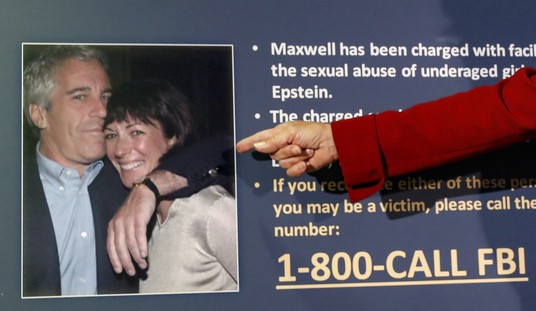Supreme Court Looks Poised To Invalidate A Major Penal Program

Credit: Brandon Bourdages at Shutterstock. Often critical safeguards to our civil liberties can come from the the most unusual sources.The Confrontation Clause was defended by helping some very unsavory characters, like a murderer and a small time drug dealer, avoid immediate retribution. Just last week, a heavy blow was administered to the egregious practice of civil asset forfeiture in the defense of a not-very-bright drug dealer. Likewise the Miranda Rights warning, so beloved of cop shows, were articulated in a decision that let a rapist go free. The requirement that any factors that enhance a sentence must be found by a jury, not by a judge, set aside stiff sentence awarded to a man who targeted a black family for harassment and intimidation. Another of these cases was heard by the Supreme Court today. Andre Haymond was found guilty in 2010 of child pornography charges and sentenced to over three years in prison followed by 10 years of supervised release. Two years after he got out of prison, probation officers seized his cellphone and several computers during a surprise search of his apartment. They found several images deemed child pornography and a search history for “websites with titles indicative of sexually explicit material,” according to court records. Haymond was charged with five violations of his supervised release terms. The district court sentenced him to five more years in prison and five years of supervised release based on a section of U.S. criminal code that requires a mandatory minimum sentence of five years’ reincarceration for possession of child pornography. The issue here is that supervised release is not parole. Supervised release and parole are similar in many ways. Supervised release and parole are both forms of post-incarceration supervision by the United States Probation Office. The rules and regulations governing supervised releasees and parolees are similar. Violations of either supervised release or parole can result in additional time in custody. Both supervised releasees and parolees are entitled to an attorney when charged with violating the terms of their release. There are, however, important differences between parole and supervised release. Persons sentenced in federal court for conduct occurring before November 1, 1987 were sentenced under so-called “old law” or “pre-Guidelines” law and are subject to parole. Parole involves release from incarceration before the end of a sentence. Parole is a form of custody served in the community under the supervision of the Probation Office and under the jurisdiction of the United States Parole Commission. Parolees remain in the custody of the Attorney General while on parole. Violations of parole are handled by the Parole Commission. Parolees are not entitled to a hearing before a federal judge. Supervised release is an additional term of supervision that must be completed after a person completes his or her term of federal custody. It applies to persons sentenced for offenses committed after November 1, 1987. Such persons are subject to the United States Sentencing Guidelines (also known as “new law” or “Guidelines” law) and are not entitled to release parole before the end of a sentence. Persons on supervised release are supervised by the Probation Office, and remain under the jurisdiction of the United States District Court. Violations of supervised release are handled by the District Court, and supervised releasees are entitled to a hearing before the District Court. And that a judge imposed prison time and an additional period of supervised release without any requirement that the allegations be proven. In fact, the court record shows that the alleged child pornography images were thumbnails that had never been clicked, see page 6 of the court record. The government, which was defending the statute got rather roughly handled by all the justices, save one. Eric Feigin, an assistant to the U.S. solicitor general, defended the law on behalf of the federal government. But he was quickly interrupted by a skeptical Justice Sonia Sotomayor, who asked him whether there was any other area of the law in which the United States allows a defendant to be sent to prison based on the preponderance-of-the-evidence standard. Chief Justice John Roberts was also dubious. The jury’s original verdict, he told Feigin, doesn’t mean that everything that follows – including the additional five years in prison for violating the terms of his supervised release – is “necessarily constitutional.” Justice Elena Kagan piled on, asking, “If this isn’t a clear-cut violation” of the Supreme Court’s cases holding that a jury, rather than a judge, must find the facts that increase the penalty for a crime, “then what is?” Only Justice Samuel Alito seemed to be squarely on the government’s side, warning that a ruling for Haymond could potentially “bring down the entire supervised release system.” As a result, much of the second half of the oral argument focused less on whether the law was unconstitutional and more on what should happen next. Just like the Miranda decision, one doesn’t have to have a whit of sympathy for Haymond to see where the prospect of a judge sending someone to prison based on “preponderance of evidence.” It seems to me that the deprivation of liberty by supervised release is different from being returned to prison and that doing so makes a prisoner’s sentence entirely an the whim of a judge. If the federal government doesn’t think it can administer this system, then it has the ability to go back to the tried and true parole system that makes it very clear that a parolee is subject to immediate incarceration for any infraction. ========= I’m on Facebook. Drop by and join the fun there.
…
Justice Brett Kavanaugh echoed Sotomayor’s thinking toward the end of Feigin’s initial stint at the lectern. When the government revokes an inmate’s parole, Kavanaugh suggested, it is simply denying a benefit. But when the government revokes an individual’s supervised release, he continued, that’s more like a penalty: The government is “adding a chunk of time on.”
…
Justice Neil Gorsuch was doubtful. Would you still argue that no jury was required, he asked Feigin, if instead of a five-year minimum sentence, an inmate was facing the death penalty? Gorsuch made his feelings even clearer later on, asking Feigin somewhat rhetorically whether the “choice of Congress to move away from parole and probation” would “have no consequences?” It “would be a rather simple thing to convene a jury,” Gorsuch suggested.
=========
Like what you see? Then visit my story archive.
Follow @streiffredstate
=========
=========Recommended
Trending on RedState Videos












Join the conversation as a VIP Member